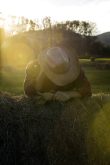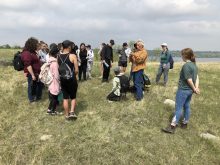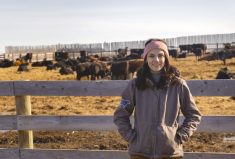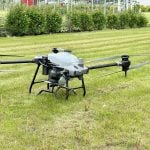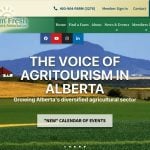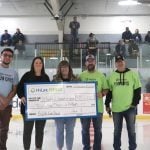When Red Crow College developed its livestock certificate program, the word “Niisitapii” came to them immediately. It means “First People.”
The college is located on the Kainai Nation’s land. The Kainai Nation, or Blood Tribe, is part of the Blackfoot confederacy and holds the most land of any Indigenous community in Canada, spanning around 557 square miles, from west of Lethbridge and as far south as Cardston, Alta.
The landscape of Kainai Nation is diverse. The northern part of the reserve has rolling hills that ease into the flat prairie covering much of the land. The sky stretches long and wide here, in a way it doesn’t in places cut off by mountains or sprawling forests.
Read Also
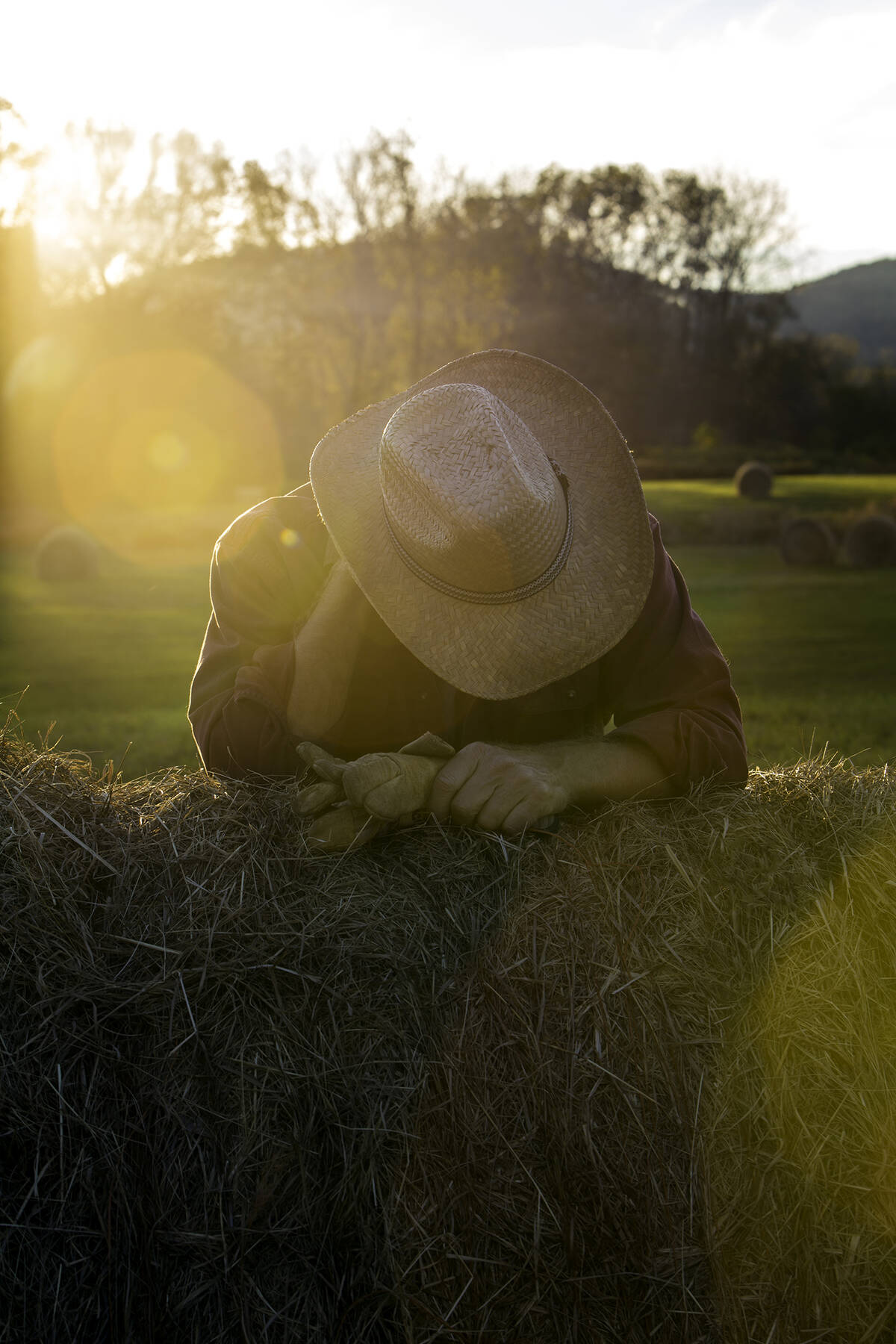
Dealing with depression in the beef industry
Veterinarian Dr. Ron Clarke writes about struggles with stress and depression, and offers resources for readers looking for help.
JR Weasel Fat, a co-ordinator of the livestock certificate program at Red Crow College, says the Kainai peoples have a strong connection to this land, from the belly buttes near Standoff, Alta., to Elk River, and even up to Okotoks — a Blackfoot word meaning rock.
“There’s all these stories that are who we are, our connection to the land,” he says.
Now, the main economy of Kainai Nation is agriculture.
That’s why, at their local post-secondary institute, Red Crow College, agricultural programs have been adopted, such as the Niisitapii Livestock Certificate Program.
History
Weasel Fat says they started working in agriculture because they were adaptable people and knew how to survive on the land. He says they continued to adapt even after settlers came to their land.
“We had this system, this economy before,” he says of the Kainai people’s switch to European agriculture.
“This is just putting a different perspective, a different way of learning about this kind of approach to what we already know. We already know how to survive, but this is just their way and we can do it that way and still be us.”
He says when settlers were coming to Canada, the Kainai set themselves apart as skilled in agriculture.
Kainai Nation has had a successful ranching and agriculture industry since the 1890s. They became large-scale farmers after the turn of the century. Before that, they were a bison-hunting culture.
Weasel Fat grew up with agriculture and cattle as an important aspect of his childhood, as well. He has a degree from the University of Lethbridge in agricultural studies, which he obtained in 2011. As he worked on his post-secondary education, he also raised cattle and grew hay and some barley.
Before his career in agriculture, Weasel Fat was an avid hockey player and played out of Lethbridge while getting his degree.
“Education and agriculture have always been a part of my life, and I’m thankful for it.”
Livestock certificate program
Weasel Fat says one of their main objectives when developing the livestock certificate program at Red Crow College was to increase interest in agriculture.
He says with there being so much agriculture in Kainai Nation and many livestock producers, they hoped to pique the interest of the younger generation.
The program was launched in 2021. “Coming out of COVID, we wanted to create some new programs.
“I guess ways to think about someone being on the land and using it to their own advantage and thinking about bettering their lives and those around them.”
The program is a year in length and teaches students about livestock production systems, handling, pasture and grazing management, as well as nutrition, feeding, health and disease, among other things. It covers livestock such as cattle, bison and horses.
Weasel Fat says the program consists of both hands-on learning and classroom learning, and 20 per cent of the learning is done in the field.
“It’s very in the class, hands-on. We’re engaging with the students, not just giving them assignments.”
He says another benefit of the program is the opportunity it provides to people who are currently ranching on Kainai Nation who may be interested in updating some things on their operation.
“Producers out here that kind of shy away from school, they can come back and learn current technologies and animal science.”
Students need a high school diploma, must be at least age 19, and have been out of secondary school for at least a year.
Weasel Fat says they wanted to ensure the program is accessible for anyone interested, regardless of their high school experience.
“It’s for students or learners who are… wanting to get into the industry. So if you’re coming out of high school and you’re still undecided what to do, you can take this program.”
There is no internship program right now, but Weasel Fat is hoping to lengthen the program to 10 months next year and include a month of fieldwork with industry partners.
He says right now many students find summer jobs or permanent positions in the industry once they finish the program. There’s also a community garden at Red Crow College where any of the ag students can work.
Sustainable practices
For Weasel Fat, an important aspect of agriculture to incorporate into this program is sustainable practices, such as regenerative agriculture.
He says it’s important to set up the next generation, and the generation after, with success.
“You can’t be a steward of the land if you don’t engage with the land,” he says.
“Having this program is very, very important to food security. Thinking about tomorrow, what are we going to hand down to the second generation, the generation coming after?”
He says with the growing population of the world and the food insecurity many people experienced during COVID, finding ways to produce food sustainably is more important than ever.
“I think having this program really allows the community to think about (food security) because the way it’s going right now doesn’t look good. I think this really starts that dialogue that is important to anything that needs resuscitation.”
Weasel Fat says the program aims to teach students how to maintain the land and the soil while also not impeding on ecosystems and wildlife.
“It’s long overdue to start using our own resources to better ourselves.”
Blackfoot ways of knowing
Another important part of the livestock program combines Blackfoot knowledge with agriculture.
Weasel Fat says the family farm and the Blackfoot way of life are not that different, which may be a reason why Kainai Nation has been successful in the agriculture industry.
“The student really engages in it, and it becomes our own way,” he says.
In the livestock program, Weasel Fat says the students go to traditional sites on Kainai Nation.
“We have a lot of connection to the land.” he says.
“They’re learning about the land, the different uses, what those sites mean, and how they apply the culture.”
He says it’s important to nurture the student’s connection to the land, and to their heritage.
“We all have pride in who we are. We all want to help our families. And that common thread needs to be more prevalent than it is today.”
Opportunities
Weasel Fat says having this certificate program at Red Crow College, as well as other programs, is a good way to introduce Indigenous students to higher education.
“They can do well in a post-secondary environment. They learn a lot about themselves and what they can do,” Weasel Fat says. “A lot of them haven’t really applied those academic skills. So it’s like self-realization that they can do something and it gets them out of their current situation, gets them into a place where it’s very forward and more opportunities present.”
In 2022, Red Crow College opened their new campus building. The original building, which was previously a residential school, burnt down in 2015 in what was deemed arson by investigators. The new building incorporates Blackfoot culture in its architecture and has Indigenous artwork displayed within.
Weasel Fat thinks the new building helps with students, as well.
“Looking at this new building we have here it makes it easier to learn, I think an easier place to come. Basically, work towards something.”
For Weasel Fat, the most important part of the work he does is to nurture the students who come through his door and to foster a deeper connection with the land his people have lived on for centuries.
“Our number one resource is the people and the land. That’s what it’s about.”




